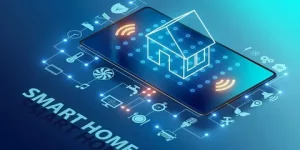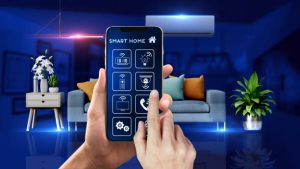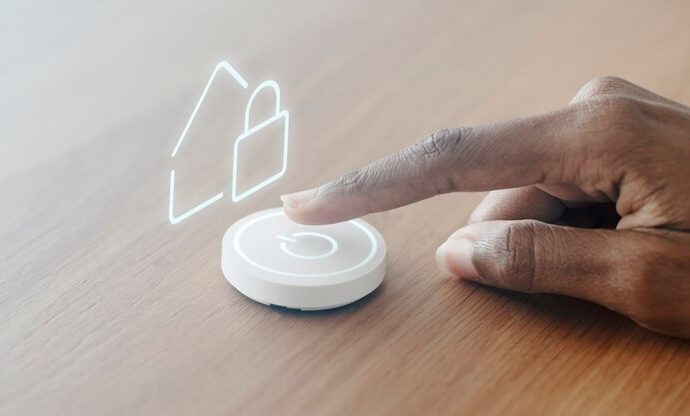The rise of smart technology has changed the way home protection works in the modern world. With the help of modern systems and gadgets, homeowners can now keep an eye on, manage, and improve their security in ways that were previously unimaginable. This piece talks about how smart home security is changing the way people
The rise of smart technology has changed the way home protection works in the modern world. With the help of modern systems and gadgets, homeowners can now keep an eye on, manage, and improve their security in ways that were previously unimaginable. This piece talks about how smart home security is changing the way people keep their homes safe, its many benefits, and some powerful case studies that show how well it works.
How to Understand Smart Home Security

Image by : Yandex.com
Smart home security includes many different systems and gadgets that can connect to the internet and let owners check on and control their security from afar. Smart cameras, doorbell cameras, smart locks, motion detectors, and whole home control systems are some of these technologies. By using smart technology, homeowners can make a security plan that fits their wants perfectly.
How home security has changed over time
In the past, locks, alarms, and neighborhood watch groups were the main ways that people kept their homes safe. Some of these ways worked, but they didn’t have the real-time monitoring and control that modern technology does. Smart technology has changed this area completely, giving homeowners more options and making their lives easier.
Benefits of Smart Home Security
Remote Monitoring and Control
One of the best things about smart home security is that you can keep an eye on your house from afar. Smart cameras and alarm systems can be viewed through apps on smartphones, so people can check on their homes from anywhere in the world. This remote access gives you peace of mind, especially when you’re moving or away from home for a long time.
Alerts in real time
Smart security systems let you know right away if something seems odd. Instant alerts are sent to homeowners when a door opens by itself or when movement is noticed in a restricted area. This function lets you respond quickly, which could stop thieves before they can do anything.
Getting along with other smart devices
Smart home security systems can work with other smart home gadgets without any problems. For instance, smart locks and smart lights can work together to make it look like someone is home even when there is no one there. This integration makes things easier to do and makes things safer generally.
Better options for surveillance
Smart security cameras record clear, detailed video because they have high-definition video cameras and night vision. A lot of systems let you store footage in the cloud, which lets people look back at footage from certain events or keep an eye on their property over time.
Interfaces that are easy to use
The apps that come with most smart security systems are simple and easy to use. This design makes it easy for everyone in the family to control their security, even if they aren’t very tech-savvy. Voice instructions and settings that can be changed make the experience even easier to use.
Cost-Effectiveness

Image by Yandex.com
While the initial investment in smart home security devices may seem high, they can save homeowners money in the long run. Many insurance companies offer discounts for homes equipped with smart security systems, recognizing their effectiveness in preventing theft and damage.
Case Studies of Smart Home Security in Action
The Johnson Family
The Johnson family, living in a suburban neighborhood, decided to invest in a smart security system after a series of break-ins in their area. They installed a combination of smart cameras, a video doorbell, and smart locks.
Results:
- Increased Awareness: The family could monitor their home remotely. The video doorbell alerted them whenever someone approached their front door, allowing them to interact with delivery personnel without opening the door.
- Deterrence: After installing the cameras, there was a noticeable decline in suspicious activity around their home. The visible presence of security cameras acted as a deterrent for potential intruders.
Urban Apartment Complex
A large urban apartment complex installed a smart security system featuring access control, surveillance cameras, and an intercom system linked to residents’ smartphones.
Results:
- Improved Access Control: Residents could grant access to guests remotely via their smartphones, eliminating the need for physical keys and enhancing security.
- Incident Response: The management team received instant alerts for any unauthorized access attempts. This capability allowed them to respond quickly, reducing the likelihood of theft and vandalism.
The Garcia Home

Image by Yandex.com
The Garcia family embraced a fully integrated smart home system, including smart lights, locks, and a security camera network.
Results:
- Automation and Scheduling: They programmed their lights to mimic their daily routines, creating the illusion of occupancy. This simple act significantly improved their home’s security.
- Enhanced Emergency Response: When the security system detected a break-in, it immediately notified local law enforcement, resulting in a quick apprehension of the intruder.
Examples of Smart Home Security Devices
Smart Cameras
Brands like Ring and Arlo offer advanced features, such as motion detection, two-way audio, and night vision, making them ideal for comprehensive surveillance.
Smart Doorbells
Smart doorbells, such as those offered by Nest and Ring, allow homeowners to see and communicate with visitors in real time, even when they are not at home.
Smart Locks
Smart locks from companies like August and Schlage provide keyless entry, allowing homeowners to grant temporary access to guests or service personnel without needing to be physically present.
Home Security Systems
Comprehensive systems, such as those offered by ADT and Vivint, integrate multiple devices, providing a cohesive security solution tailored to the needs of the homeowner.
Future Trends in Smart Home Security
As technology continues to evolve, so will the capabilities of smart home security systems. Some anticipated trends include:
Artificial Intelligence (AI) Integration
AI can enhance smart security systems by improving threat detection and response. For example, AI algorithms can differentiate between a pet moving in front of a camera and a potential intruder, reducing false alarms.
More automated processes
It’s possible that future systems will have more automation, which will give you more control over all of your smart home devices. People may be able to set up their homes so that when they leave for work, the lights turn on, the doors lock, and the cameras start recording.
Better privacy features
As worries about data privacy grow, gadget makers will have to make user privacy a top priority. In the future, smart security systems might make it easier to see how data is being handled and give users more control over how data is shared.
Integration with first responders
The connection between emergency services and smart home protection systems could get stronger. Some systems could immediately call the police or fire department in the event of a fire or break-in.
Final Thought
The way we think about and use safety measures in our homes has changed because of smart home security. With real-time alerts, remote tracking, and the ability to connect to other smart devices, homeowners now have powerful tools to protect their home and family. The interesting case studies show how well these technologies work in real life. They show that investing in smart home security is a way to make your home safer and give you more peace of mind.
As technology keeps getting better, smart home security will be able to do even more. This will make it an important part of modern home life. Adopting smart technology is not just a trend for people who want to make their homes better; it’s the smart thing to do for a safer future.
















